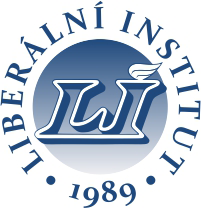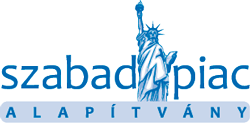At the quarter-century mark of the Visegrad states’ freedom from the USSR, Johannes Wachs examines the Group’s role in today’s European Union.
2014 marks both the twenty-fifth anniversary of the fall of the Berlin Wall and the tenth year since the Visegrad Group countries – Hungary, Poland, Slovakia and the Czech Republic – became members of the European Union. Convergence with Western Europe, on economic, social and political lines, is an ongoing process with some success. However, there is still much room to improve and spread the benefits. Enthusiasm for the EU in the Visegrad Group has fallen in line with continent-wide trends. Growing the confidence of the region and its nearly 65 million inhabitants as partners in the EU has many potential benefits for the region and community.
Progress and Setbacks
Per capita GDP adjusted for purchasing power has risen from 49 percent to 65 percent of the EU-15 average in ten years. With the exception of Hungary the population at risk of poverty or social exclusion has fallen significantly. In absolute terms, however, the Visegrad group is still far behind the EU-15. Furthermore, the disruptive nature of integration into the common market insures that benefits are not universal. This is surely one reason for the deterioration in institutional democracy amongst some Visegrad Group members since 2005, as measured by Freedom House’s Nations in Transit scorecard, and the rise of parties like Hungary’s far-right Jobbik. In parallel the image of the EU has fallen, as seen in the chart below.
Citizens’ attitudes towards the EU over time
Poland skews the results quite heavily. In November of last year 45% of Poles had a positive image of the EU and 43% a neutral one, leaving only 10% with negative feelings. Poland also has the best results of the Visegrad Group in the Freedom House survey. The Polish economy has grown immensely and was the only one in the region to avoid recession in the wake of the financial and sovereign debt crises. The percentage of the population at risk of poverty or social exclusion measured by Eurostat has fallen from 45% in 2005 to 26% in 2012. The other Visegrad countries have not made the same progress, though they did start at a higher level: wage data points towards regional convergence. Poland also stands out as the best user of EU funding.
The scope for EU-level policy and coordination
These results suggest that Central and Eastern European enthusiasm for the European project is highly dependent on the broad delivery of increased standards of living and opportunities. Good then that the region is one of the largest beneficiaries of cohesion funds in the 2014-20 budget cycle. Effective use of these funds is very important driver of both inter- and intra-country convergence. Corruption is a clear roadblock, and while Slovakia’s celebrated e-tender system is a good model, the EU should take an active role in the disbursement of funds in the coming cycle. More broadly, risks of political and institutional regression demand an EU active in setting and policing standards. Just as adopting the Euro does not mean a country has Germany’s economic resilience, joining the EU does not mean the building of healthy institutions is complete. Current tools available to the EU to censure member states for poor fundamental rights outcomes are lacking.
Another area of concern is the demographic profile of the region. Low birthrates and emigration put social safety nets, economic development and even entire communities in jeopardy. As young and educated Visegrad labour flocks to Germany and the UK, adjustments need to be made. Immigration from outside the EU needs to be considered, and that can only be realistically done at the Brussels level. The Roma population of Central Europe, in contrast to the overall picture, is young and growing but faces discrimination and exclusion. Better outcomes in this area, besides addressing an appalling social situation, would greatly ease the demographic problem. In this case, even though local solutions may be better than top-down directives, the lack of progress reveals a need for more pressure and incentives from the EU.
What does the Visegrad Group offer Europe?
A strong, increasingly active Visegrad Group benefits Europe in many ways. As income converges and poverty decreases, the Visegrad countries form an increasingly attractive market for Western Europe’s struggling economies. As well-connected members of European supply chains, increased disposable income can drive a virtuous cycle of increased consumption and external investment. Leading by example, the region can also provide a positive benchmark to younger and future EU member states. Geography insures the relevance of these countries in any discussion on Ukraine, Russia and the Eastern Partnership countries.
Perhaps most important would be the recovery of the very real enthusiasm for the European project once present in these countries. Czech writer Milan Kundera described the Central European Warsaw Pact states as kidnapped Western states trapped in the East. In this way the sharp turn towards the West after the fall of the Iron Curtain was a homecoming. Indeed, dissident playwright-turned-president of Czechoslovakia Vaclav Havel, writing in 1992, envisioned his country at the heart of an economically and politically integrated Europe within twenty years. For Havel, the Visegrad Group has the potential to become a Central European Benelux. Just as Belgium, the Netherlands and Luxembourg were a vital part of post-war integration, a healthy Visegrad region would energize its neighbours and partners.
Alternatives for the European project have a presence in Central and Eastern Europe, both in their recent collective memory and across their external borders. This presents both opportunity and danger. Progress towards Western European standards of living and social inclusion would be a great win for the EU, its model for states and its international stature. Stagnation or decline on the other hand, would lead to fragmentation and a search for new role models. More collaboration, assistance and, when necessary, oversight, can help insure the better outcome.
Graphs and tables sourced from the European Commission.
The original article was published here: http://www.democraticunion.eu/




















No comments
Be the first one to leave a comment.